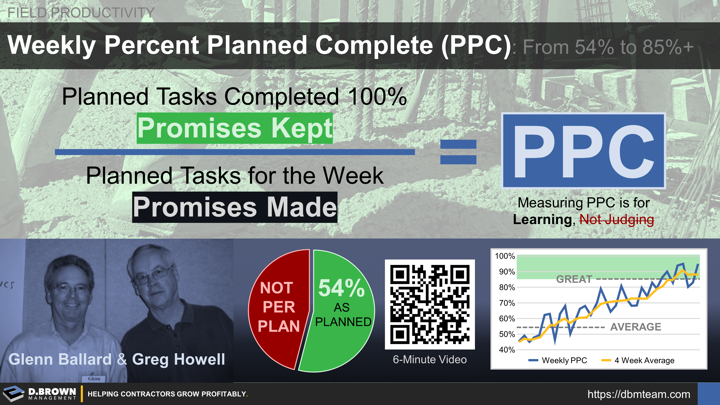Measuring Percent Planned Complete (PPC) each week and continuously improving is one of the foundations of the Last Planner System (LPS). Whether you are on a project using LPS or not, you can use PPC as part of a Foreman Coaching Program and your Project Management System including escalation and communication plans to keep your projects moving forward.
The calculation is pretty simple:
- What tasks did you plan to get done for the week?
- Which of those tasks did you actually complete as planned - started and finished on-time?
See the calculation example on a Short-Interval Plan (SIP).
Greg Howell who founded the Lean Construction Institute (LCI) in 1997 with Glenn Ballard describes their analysis of project performance studying 400 weekly work plans and learning that only 54% of the tasks were completed as planned. This 6-minute video of Greg is horrible in quality but great in content describes it well.
Jason Mayes dives further into PPC calculations in this 10-minute video.
Other common terms we’ve all heard throughout our lives:
- The “Say/Do Ratio”
- Say what you are going do and do what you say.
- You are what you do, not what you say.
- Promises Kept vs. Promises Made
Improving this single metric over time builds trust and your reputation of integrity which is why the Lean Construction Institute (LCI) has called this “Reliable Promising”.
Most of misses will come down to either poorly defined tasks, failing to meet one or more of the 6 Pillars of Productivity or poor daily execution.
The Foreman and Project Manager will learn to build influence because many factors impacting their PPC are outside their direct control.
Beyond the project level, paying attention to Percent Planned Complete (PPC) is a valuable principle and feedback mechanism for keeping internal improvement projects on-track as contractors grow, adjust their market strategies, and integrate new people into the team.

